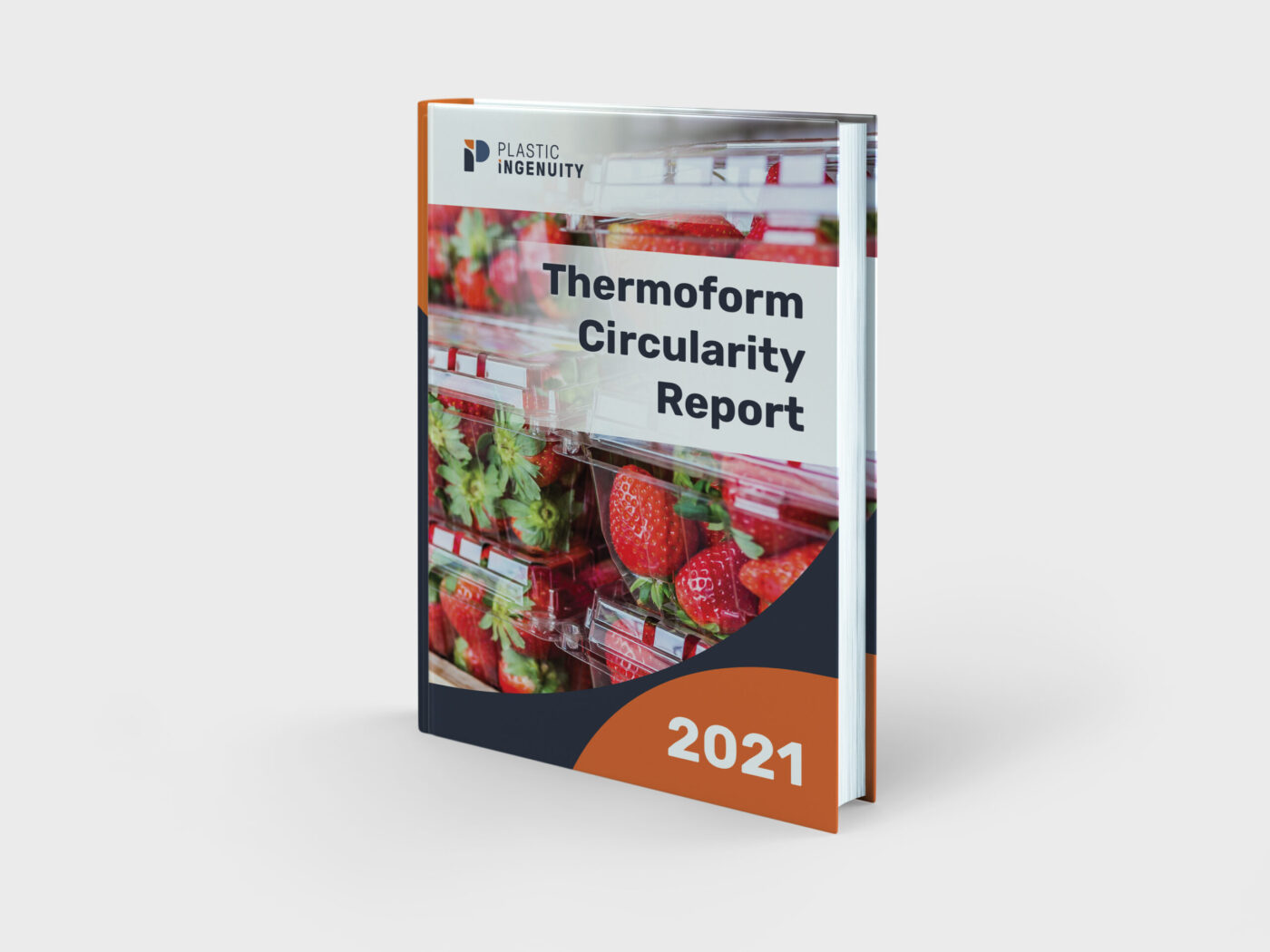
PI’s inaugural Thermoform Circularity Report is the culmination of a year-long effort…


Welcome back to PI Circular! Healthcare packaging often gets overlooked when discussing sustainability and the shift toward circularity. The following article, written by PI’s healthcare packaging expert Kiley Djupstrom, will shed light on some of the efforts underway to improve the sustainability of healthcare packaging. The article has been edited for length, but it can be found in its entirety in our Thermoform Circularity Report 2021.
Healthcare Packaging Sustainability
Healthcare plastic packaging represents a significant opportunity for the capture of high-quality recycled materials. According to the Healthcare Plastics Recycling Council (HPRC), 2,000 to 3,000 tons of non-hazardous medical waste is generated daily. Capturing these high-quality materials for future use is paramount as new avenues of supply are needed to meet the increasing demand for PCR materials.
Healthcare packaging faces some unique challenges on the pathway toward circularity. Healthcare Service Providers (HSPs) lack the infrastructure and systems necessary to efficiently collect, aggregate, and transport their waste to reclaimers. Although most of the plastic waste generated is non-hazardous, many Material Recovery Facilities (MRFs) view healthcare waste as undesirable due to the perception of contamination. Additionally, the amount of waste generated at an individual provider is not significant enough to incentivize a MRF to collect the waste directly from the provider, thus highlighting the need for aggregation. On the demand side of the equation, medical device and pharmaceutical packaging regulatory requirements constrain the use of mechanically recycled content.
The pressure on healthcare packaging creators to enhance the sustainability of their packaging has intensified despite the aforementioned challenges. Major HSPs are committing to zero waste initiatives. Group Purchasing Organizations (GPOs) are weighing sustainability performance metrics as part of their supplier contract and business award process. Large pharmacy chains are demanding sustainable packaging solutions for consumer products sold over the counter (OTC).
Organizations such as HPRC are bringing together stakeholders from across the value chain to create solutions to the recycling challenges. Emerging technologies like advanced recycling hold the key to a promising future for enhanced circularity. However, these solutions will require time to develop, and healthcare packaging creators need to act now. Fortunately, there are levers that can be pulled now to improve their sustainability footprint while these solutions take root.
Sustainable Design Principles
Packaging engineers can enhance the sustainability of their thermoformed packaging by including sustainability objectives in the design inputs. Packaging for healthcare applications tends to have a longer development curve and is more difficult to make changes after launch when compared to packaging for consumer goods. It is imperative to include sustainability principles in the healthcare packaging design process so these impacts can be realized at launch. Three common principles designers can leverage are reducing packaging components, minimizing footprint, and optimizing material thickness.
Leverage Material Innovations
A common struggle for packaging engineers is to balance the desire to minimize materials with the need to make sure the packaging system is robust enough to withstand the rigors of distribution. Product scrap due to defects caused by insufficient packaging systems is not acceptable but the practice of “over-engineering” to eradicate risk is no longer okay. Packaging engineers must leverage design expertise and material innovation to solve this dilemma.
Circular Solutions
Circular solutions, such as “take-back” programs, must be customized given the lack of a national recycling system inclusive of healthcare packaging. Life Cycle Assessment tools should be used to make sure systems are crafted intelligently. The solution with the highest degree of circularity is not always the optimal solution in terms of environmental impact. Packaging creators must identify what criteria is most important to their organizations before designing and implementing solutions.
Eliminating Materials of Concern
Medical Device Manufacturers (MDMs) identify materials of concern (MOC) to address the risk of potential unintended harmful effects from those materials. PVC is a common packaging material identified on MOC lists. The idea of an MOC list is to put special emphasis on reducing the use of or eliminating MOCs. Executing material changes on legacy packaging items can be a complicated and costly process with inevitable challenges to navigate.
Looking to the Future
The healthcare packaging industry is under intense pressure to improve the sustainability of their offerings despite serious barriers. The industry is dedicated to overcoming these barriers, but the solutions will take time. There are actions healthcare packaging experts can take now to significantly improve their sustainability footprint while long term solutions delivering enhanced circularity are developing.
Have you been following our “Good Information” video series? The mission of “Good Information” is to provide a concise understanding of a topic related to circularity. Our recent installment focuses on how advanced recycling (also known as chemical recycling) works and how it contributes to the circular economy. Please enjoy by visiting the link below and feel free to share!

New Jersey governor signed an ambitious recycled content bill into law at the beginning of this year. The law will require rigid plastic containers, like thermoforms, to have a minimum 10% post-consumer recycled material content by 2024. The minimum will escalate to 50% by 2050.
This article from Waste Today provides expert commentary on the potential benefits and drawbacks of minimum recycled content mandates: Experts discuss pros and cons of recycled-content mandates.

Google recently released their full report on recommended interventions to close the plastics circularity gap: Closing the Plastics Circularity Gap.
Shelton Group on the importance of instilling trust in recycling: Americans love recycling, they have no idea how it works, and they think it might be broken.

Billion – value of global healthcare plastics market.
Annual growth rate of plastics market.
Nearly all medical plastic is landfilled or incinerated.

We look forward to participating in a panel discussion at the[PACK]out Conference in Austin, TX on May 10-12! PI’s sustainability champion, Zach Muscato, will share his thoughts on how packaging creators can leverage the power of the value chain to create more sustainable healthcare packaging. See here for more info: the[PACK]out Conference.
